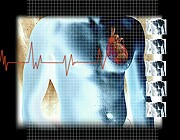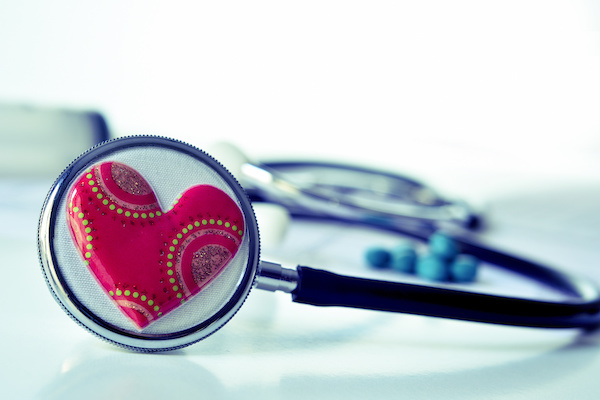
WEDNESDAY, May 4 (HealthDay News) — A new type of implantable defibrillator was able to rectify ventricular fibrillation, a severely abnormal heart rhythm, in all patients who received it, and none experienced sudden death, according to new research.
The device, called the subcutaneous implantable cardioverter defibrillator (S-ICD), is already approved in Europe and is undergoing review by the U.S. Food and Drug Administration, said Dr. Lara Dabiri Abkenari, lead author of the study, which is to be presented Wednesday at the annual meeting of the Heart Rhythm Society in San Francisco.
Defibrillators monitor heart rhythm in people with a higher risk of arrhythmias (abnormal heart beat) and restore normal rhythm with an electrical shock if needed.
Conventional defibrillators require insertion of an electrical lead directly into the heart through a vein.
With this new device, the leads are subcutaneous, meaning they are placed right under the skin, which offers a number of advantages, but also some disadvantages, the researchers pointed out.
“The leads are put above the bone on the thorax so they rest on the chest bone,” said Dabiri Abkenari, an electrophysiology fellow and doctoral candidate at Erasmus Medical Center in Rotterdam, the Netherlands. “The big advantage is how minimally invasive it is.”
“If there is a lead problem, it’s very easy to extract a lead and put in another one,” added Dr. Arthur Moss, professor of medicine and cardiology at the University of Rochester Medical Center in Rochester, N.Y.
It’s also good for young patients who might grow out of the transvenous system, he said.
And it carries a lesser risk for infection because the leads are, literally, only skin deep, said Dabiri Abkenari, who did the study as part of her research for her doctorate.
But the external leads have one disadvantage in that they can’t be used in patients who also need pacemakers. Nor can they be used in people with heart failure.
The S-ICD is also associated with a somewhat higher electrical output, meaning the shocks are “associated with more subjective pain and discomfort,” Moss said. “That’s just something that one has to be aware of.”
The researchers say the trial is the largest to date to study the S-ICD. Ninety-eight patients, whose mean age was 56, were followed for an average of nine months.
After the new defibrillators had delivered 65 shocks to three patients, the researchers analyzed the results and found that the S-ICD had restored rhythm in all cases.
No one required hospitalization and no one experienced sudden cardiac arrest.
Eight patients received shocks when they shouldn’t have because the device was overly sensitive. The authors stated that the problem went away when the software was recalibrated.
“It’s another part of the armamentarium of treatment for high-risk patients who are at risk for sudden arrythmic death, and it’s always nice to have a broader spectrum of potential therapies,” Moss said.
“These preliminary results looked favorable but we’re talking fundamentally about a small number of patients relative to the hundreds of thousands that have transvenous systems so there’s a lot more to learn about this,” he added.
More Information
The U.S. National Library of Medicine has more on pacemakers and implantable defibrillators.

